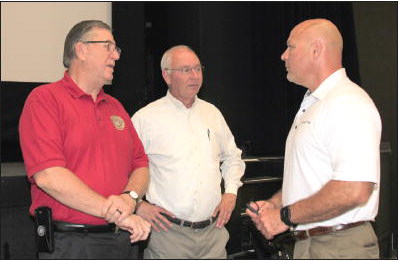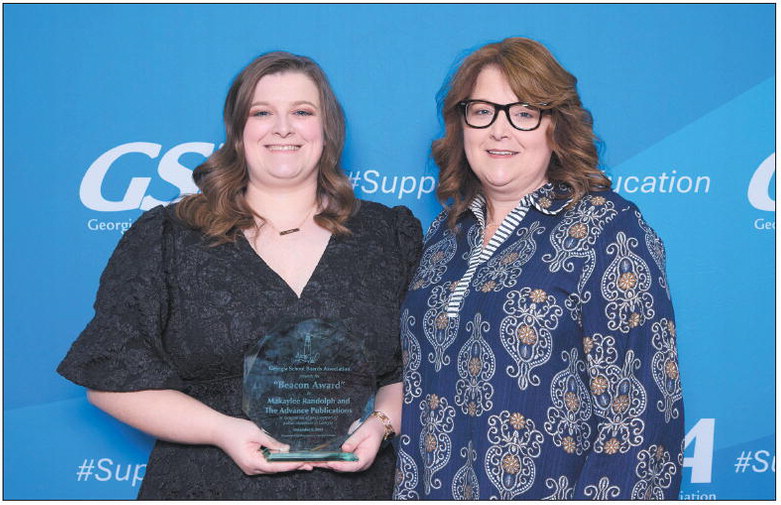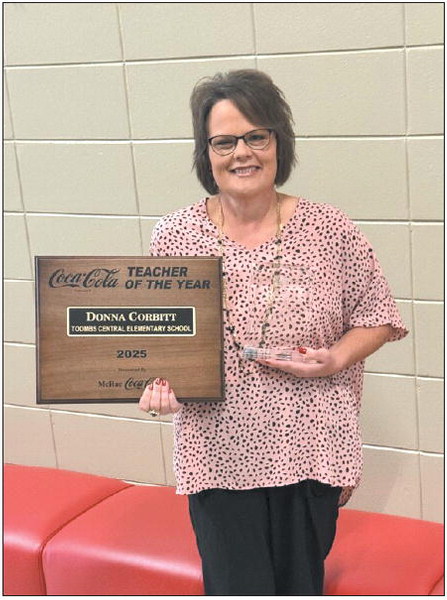Unleashing Community’s Potential


A cross-section of community institutions and agencies—from local government to education, health and social services to the media—was represented in a workshop held in downtown Vidalia on May 26. Sponsored by The Greater Vidalia® Chamber and the Toombs County Development Authority,
Workshop
2A continued from page
the Vibrant Community Workshop was a follow-up to a February 2020 meeting facilitated by Quint Studer, founder of Vibrant Community Partners.
Vibrant Community Partners assists communities in customizing a blueprint for achieving growth and excellence. Studer was instrumental in the revitalization of Pensacola, Florida, where today there is more downtown construction underway than at any time in modern history.
Locally, the Chamber and Development Authority are working with community partners to develop a blueprint for building a community that offers a high quality of life for all citizens and where young people have a future.
Ann Owens, Director of Community Development with the Chamber and Development Authority, noted, “We are very excited to finally get Studer’s program off the ground and to engage the community in ensuring our continued growth and prosperity.”
The workshop was facilitated by Mickey Daniell, Community & Economic Development Manager with Georgia Power, who introduced a Community Dashboard and revealed the results of last year’s survey and Studer’s site report visit. The focus was on the implementation of the “road map” suggested by the Vibrant Community Partners. The road map includes the four gears that power our community – Economic Development, Placemaking, Civic Education & Engagement, and Early Learning & Education.
Owens said the hope is that those attending the workshop—the stakeholders in the community or the guiding coalition—will review the information presented and select one of the four gears that power the community as an area in which they would like to volunteer their time and talents. “We hope that by August we will be able to come back together and break into smaller groups which will come up with short and long term goals within their area of focus,” Owens explained.
“This has to be community- driven,” Owens said. “It is not something the chamber can do alone. The momentum needs to keep going and right now it is a sifting process to figure out who can make this happen.”
She said the community partners that included representatives of local government met several times concerning goals and people who would be vital for the effort prior to the first Vibrant Community meeting in 2020. A blue print or road map was then developed for how the community might achieve its objectives, and a survey of 300 local residents was undertaken. This assessment provided insight into how area citizens view the quality of life in the community. A dashboard was developed to provide focus on the areas the community determines as areas that need attention. Owens continued from page
said these areas can include items like household income, the rate of teen pregnancy, housing, or crime, and this data can be updated as needed.
Daniell told those attending the May 26 workshop that civic engagement drives an effort like the Vibrant Community program. “You have to educate the population and keep them engaged.”
He urged attendees to take good look at the gears that power a community and to select an area about which they are passionate and to commit to working in that area. “This is citizendriven, and you have to be passionate about the area in which you serve because passion will lead to success when things get tough.”
He added, “Citizen engagement means that everybody is aligned and growing together. If you don’t educate your population on the issues, you can’t get them to look at the issues and agree to move forward on them. You may not agree on everything, but you can find common ground about which you are passionate.”
Daniell emphasized raising the citizen IQ by educating them on issues important to their community’s function, like taxation. “Why is it important to vote for E-SPLOST? A penny is a small price to pay for decent schools. You need to understand the value of education and once you explain why, it makes an impact.” He also stressed the value of vibrant cities. “Downtowns are important because they create a sense of place, a sense of pride, and people connect to that. They want to be there. To get great downtown you need to create a sense of place and create programs.” He offered as an example what is already going on in this area like the Real Squeal and the Vidalia Onion Festival. “When people come downtown, retail will follow. You have to have foot traffic for retail to survive.” Daniell noted that small business is essential for community growth, but communities need to help nurture these endeavors. “Eight percent of small businesses go out of business within three years. Small business owners may be great visionaries but not talented at economics. You need to have people who can train small business owners.” He suggested the Small Business Administration as a resource. “They don’t charge a lot of money and they are second to none” with their training.
Education should be premier as a foundation for revitalization, Daniell said, reinforcing how vital early education is in the development of a community. “More successful students contribute to a better workforce.”
“This is a process, not a singular event. It takes time for change to happen,” Daniell said. “When you go to make changes, it’s hard. You will get pushback. But it is not like you are starting from zero. You’ve got a lot of positive things in place but you can get better.”
Daniell, who will be facilitating the local Vibrant Communities program, added, ”A lot of people need to be hearing this message. More people need to be in the conversation. You can’t change a community without representation from all people.” He urged doing small things to build momentum “If people don’t see positive things happening, they give up. Small successes are important. It is OK to have big ideas, but make sure to execute them and make sure people understand the vision. Pick one or two high-impact items and do them well.”
He commented, “The best time to plant a tree is 20 years ago. The next best time to plant it is today. You as a community can say 20 years from now we planted a tree. If you want to change, the only time you can start is today, and it means you have to go to work. Don’t point fingers and blame. Think about what is not working well in your community. We are going to roll up our sleeves together as a community and figure out how we make this better for all.”




